A Photo Essay of the Life and Work of Dr. Marc Edmund Jones
Diana E. Roche
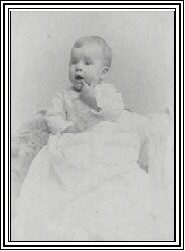
Marc Edmund Jones was born to Edmund H. and Annie Louise (Holmes) Jones at 8:37 a.m on October 1, 1888 in St. Louis, Missouri. Little is known of his preschool years outside of the fact that his family moved to Chicago, Illinois in 1891 and lived next door to Christian Scientists in a two-story brick house on what is now Lake Park.
Marc once commented that he recalled little of his early childhood except for one memory of St. Louis, and he remembered nothing of his first year in Chicago.
He was the first and, for nine years, the only child in the family. His sister, Helen, was born in 1897.
Marc described his family life as "quiet." He had no memory of his parents talking together and he recalled that his father read most of the time. In 1893, at the age of five, Marc attended the World Columbian Exposition. It was there that he made his first observations about the importance of sequence and relationships after studying an exhibit of precious stones that were categorized according to color and value. The thing that puzzled him was what made one stone more valuable than another.
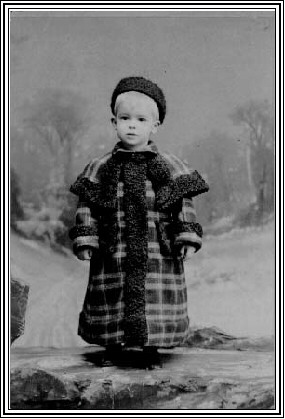
His lifelong fascination with structure and pattern revealed itself at an early age. He related in later years that he "constructed an elaborate semaphore system on the back fence with strings running all the way down to the yard and to my room in the house. I would manipulate the strings, and the engineers would salute."
He also constructed cardboard railroad systems on the floor of his room, complete with cardboard tracks and trains.
Marc attended John Dewey's experimental high school in Chicago. His attention to detail was revealed in a story he told many years later of planing away the surface of an entire board in a manual training class there, trying to get its surface perfect.
When he was 16, Marc made a lifetime Christian commitment at a Presbyterian church in Chicago. At that time, he lived at 53rd near Kimbark. He dropped out of high school in 1907 to go into business. It is not surprising that his first job in 1908, at the age of 20, was for the Pullman Company. The following year, he assumed the position of Yardmaster in Seattle and western Canada. Three years later he went to work in Santa Barbara, California as the manager of Western Machine and Foundry.
In 1911, he left Santa Barbara and took a job at Addressograph in Chicago where he first began to write scenarios. His first, "Mrs. Brown's Furs" was rejected.
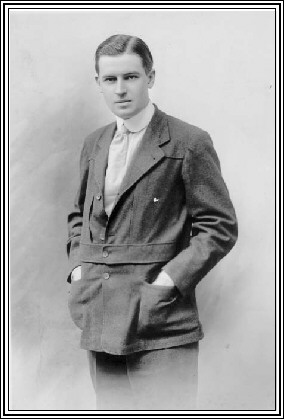
The next year, in 1912, he started working at Western Electric in Chicago. On March 16th of that year he sold his first motion picture scenario, "Twilight," for $20.00. That was the beginning of an approximate 10-year career, writing and publishing scenarios.
In 1913, at the age of 25, Marc resigned from Western Electric and began the study of astrology. He also moved to New York City, the headquarters of the movie industry in those days. His goal was to become a freelance writer.
He sold a total of 13 scenarios that year. Several of those titles give a flavor of the times: "Curing Her Extravagance" and "The Miser's Policy." Other titles reflect the early stages of what was to become a lifetime of study and involvement with the occult: "The Prophecy," "Destinies Fulfilled," and "The Sign."
The following year his mother died and he met the occultist, W.J. Colville, author of Universal Spiritualism. Marc later described Colville in his book, Occult Philosophy, as "having had great influence in preserving a measure of reconciliation between Spiritualism and Theosophy." He eventually lived in Colville's room at Hyperion House where he had significant "spiritual experiences."
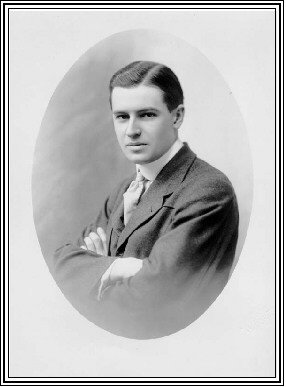
Marc moved to Judson Tower on Washington Square, at the south end of 5th Avenue in 1914. He was particularly successful that year in that he sold a total of 39 scenarios. Many of the titles reflect a more romantic side of the man who would later found The Sabian Assembly as an experimental and modern "Plato's Academy." "The Kiss" and "Our Mutual Girl Hears Royal Romance" were just two of those titles.
In 1915, Marc went to Bermuda with a film company, sold 18 scenarios and became the Scenario Editor for Equitable Motion Picture Corp. It was apparent, though, that he was becoming more deeply involved in spiritualistic pursuits as he joined the Rosicrucian Society that year. He taught classes for the Max Heindel group and said it was there that he became thoroughly grounded in the occult and experienced the actuality of the screen of prophecy, or the idea of things fitting together and being a part of each other.
In 1918, during World War I and at the age of 30, Marc was inducted into the Army. Curiously, four years earlier and prior to the war, he had written a scenario entitled "Millions for Defense." He served as a private at Madison Barracks where he became the editor of the camp paper. Four months later he attended Officers Training School at Camp Lee, Virginia.
Marc was honorably discharged from the service at the end of the war in 1919 but he found the doors of the motion picture industry closed to him by influenza. It was then that he turned to writing pulp fiction. He published his first article in Argosy Magazine and 13 others that year.
The next two years reflected his ability to function in a number of worlds at once. Following the publication in 1920 of such articles as "The Girl Who Took a Bath," in Saucy Stories, and "The Quakeress Vamp" in Smith's Magazine, he took a position as Executive Head of the 6th Worlds and 28th International Christian Endeavor Convention in New York City in 1921. He also turned to writing mystery stories and published a total of 14 articles that year.
The year 1922 marked a turning point for the man who would later become known as "The Cabalist." Rejecting the popular fortune-telling astrology of the day, he began organizing and codifying his astrological material by what he termed a "cabalistic" method. Although his method included the more widely recognized Hebrew Kabbala, he described his approach as a blend of head and heart, or poetry and philosophy, that is directed toward helping the individual to integrate those functions within himself. His cabalistic structure permeates the Sabian lesson material.
An earlier period of Marc's study of the Fons Vitae by Solomon ben Judah ibn Gabirol resulted in his development of a method for problem solving that uses a special cabalistic pattern of "magic squares." This technique has been used by many of the Sabian Assembly students and later became the basis of William T. Roche's thesis for his master's degree in philosophy, as well as the basis for Marc's last and posthumously published book (2010), titled Patterns of Consciousness: The Ibn Gabirol Magic Squares. It is currently the focus of a special Sabian student study group. It should also be noted that Marc used the magic squares patterning to structure the entire corpus of the Sabian Assembly study materials.
At some point in 1922, Marc began working with Zoe Wells, a recognized commercial artist and student of his, who possessed remarkable psychic skills. In an experimental session, Miss Wells brought through fifty-two symbols for a pack of ordinary playing cards. Marc described this event, in his book, The Sabian Symbols in Astrology, as the "beginning of a conscious recognition of the ancient sources as a self-contained and living integrity available for use."
On December 5, 1922, Marc began the first of a series of weekly classes in astrology at the Judson Tower in New York. He uses that date and time as the birth date of the Sabian Assembly for astrological charts, although he designated October 17, 1923 as the official birthday of the Assembly. It was on that date, after moving back to California in April, that he resumed his classes at Manley Palmer Hall's Church of the People in Los Angeles. But it wasn't until 1928 that his students selected that name to call themselves, as representative of people who were interested in what was then astrology. That same year, in 1923, Marc met Priscilla Kennedy Chandler, his future wife, and Elsie Wheeler, the psychic with whom he would work in bringing through the Sabian symbols several years later.
Marc published nine more articles in the period of 1922-23 and then turned to writing the first of the Sabian lesson sets in 1924 — The Codex Occultus, Key Truths of Occult Philosophy, and commentaries on The Book of Daniel and Grimms' Fairy Tales.
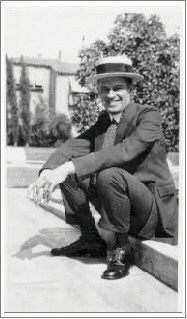
On some unrecorded date in 1925, Marc drove to Balboa Park in San Diego with psychic Elsie Wheeler, who was then one of his students, and there, during the space of a day, they brought through the now famous Sabian symbols.
As Marc told it, "I had to find a place where the conditions would be proper for Elsie Wheeler, through whose consciousness the laya [energy] center in each of the three hundred and sixty cases could get in a picture or situation with meaning in modern and common everyday life, for that one of the Brothers who had the age-old and particular saturation in the true Memphite (earlier Egyptian) schematism from which the zodiac was derived originally, and myself, supplying the especially refined cabalistic training needed for the critical interpretation or rationalization of the relationships at the threshold of a new or atomic age. . . ."
His first commentary on the Sabian symbols was experimental and he later rejected it as too moralized, or set in the prevailing white, Anglo-Saxon culture of his upbringing. After working out the formula pattern and a new commentary, he went back to the original pencilled descriptions, precisely as he first wrote them down in his own words as Elsie described her "inner visions" and, in 1953, published them in his book, The Sabian Symbols in Astrology.

The following year, on June 11, 1926, Marc married Priscilla Kennedy Chandler. Three years later, at the age of 41, Marc began a three year program at Occidental College in Los Angeles. He graduated in June of 1932, and in August he began a three-year program of study at the San Francisco Theological Seminary in San Anselmo, California. He graduated from Seminary in 1934 with a Bachelor of Divinity degree. His thesis was "The Prophesy of Israel." That same year, he was ordained as a minister and was installed in a pastorate at Esparto, California.
On July 6, 1936, he matriculated at Columbia University. On August 29 of the following year, his father died at the age of 74. In April of 1938 he moved to New York and became a student in the Advanced School of Education at Columbia.
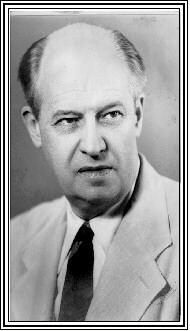
In 1939, Marc began traveling extensively throughout the United States, speaking on astrology. The following year, he published an encyclopedic article, "The Science of the Ages," that ran for 11 issues in American Astrology. In 1941, David McKay Co. published his books How to Learn Astrology and Guide to Horoscope Interpretation and eleven of his articles were published by Horoscope and American Astrology.
From 1942 through 1943, Marc published a total of 39 articles in various astrological magazines on topics ranging from horary astrology to a series of Grandon Trine astrological detective stories. He was also actively involved in the Astrologers' Guild at that time.
During the same four years, Marc wrote over 900 of his 3,002 lessons on philosophy, the Bible and other special topics for the Sabian Assembly students. A full listing of those sets may be found in the brochure on The Sabian Assembly. Each set consists of approximately 26 lessons.
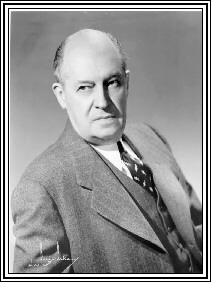
From 1944 through 1947, Marc published his book Astrology, How and Why It Works and 33 other astrological articles while working on his doctorate at Columbia and lecturing throughout the country.
He was awarded his Ph.D. in Philosophy in 1948. His dissertation was on George Sylvester Morris, a theistic idealist. That same year, after the assassination of Gandhi, he wrote the book Gandhi Lives, from start to finish, in six weeks. He also published Occult Philosophy and George Sylvester Morris.
From 1949 through 1952, Marc traveled and lectured on astrology throughout the country. In just one four-month period in 1951 he traveled 14,438 miles. The following year he traveled another 14,682 miles from March to September.
During 1952, Marc maintained residences in both Miami, Florida and New York City. In 1953, he helped his old friend, numerologist Florence Evelynn Campbell, found the Metaphysical Foundation in New York City. That same year, he published The Sabian Symbols in Astrology in book form after having reworked the commentary for two years.
Marc moved to Stanwood, Washington in 1954 and, for the first time since 1907, established a permanent home. He spent 1955 working on his new home, but the next year he was back on the road lecturing in Chicago, Detroit, Miami, New York, Los Angeles and other cities. In 1957, he published The Sabian Manual (the handbook still used today by the Sabian Assembly students), and in 1960 he published Essentials of Astrological Analysis.
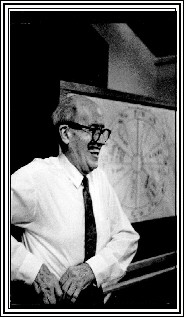
In 1963, at the age of 75, Marc became seriously ill and canceled an astrological lecture in Seattle. That same year, he discontinued his regular orthodox church and ministerial activities. Not to be kept down, he resumed his lecturing later that year.
He started writing Scope of Astrological Prediction in 1965, a task that would take him four years. He later commented that his mind was "erased" in relation to that book and he started over again in 1967. The book was finally published in 1969.
In 1973, he published The Sabian Book and the Sabian Assembly celebrated its 50th birthday.
Marc's next book, Mundane Perspectives in Astrology, was published in 1975 when he was 87. The following year, his book How to Live with the Stars was published. That same year his wife, Priscilla (who he always referred to as "My Lady") died, and Marc fell at the MGM Hotel in Las Vegas and was seriously injured.
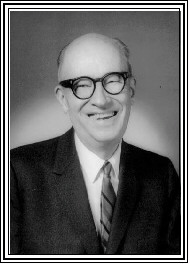
Marc became seriously ill with the flu early in 1977, but by June, and at the age of 89, he was back on the lecture circuit and gave several workshops in Virginia Beach. In August, he traveled to the Sabian Conference in Chicago.
In 1978 he wrote that he was suffering with heart problems but was still working on two new books that were published later that year — Man, Magic and Fantasy and Fundamentals of Number Significance. He was, at that time, 90 years old. The following year he published his final book, The Counseling Manual in Astrology.
In February of 1980, Marc wrote that he had suffered a fall. On March 5, Robert Spencer, Marc's close friend and the new Administrator of the Sabian Assembly, wrote "I am writing this just a few hours after receiving word of Marc's passing . . . .
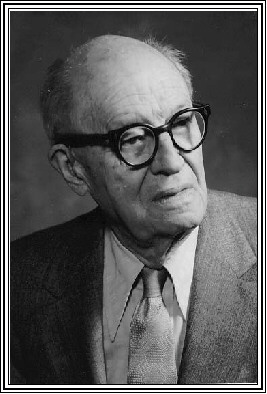
Marc left a living legacy in his students throughout the world and a voluminous body of biblical, philosophical, astrological and occult materials that form the basis of study for groups that continue to meet regularly as well as his "students afield."
The public knew him best as an astrologer, but his students remember him most warmly in the poetic beauty of the closing lines of his healing ritual:
May the temple of your living flesh
Be worthy of your high desire;
May your worldly place in daily life
Bring recompense in rich degree;
May your happiness and state of heart
Endear you everywhere you go;
And may the spirit stirring deep within
Be ever conscious in your thoughts!
Acknowledgements
Carnarius, Stanley. Marc Edmund Jones: Perspectives & Selections. Lancaster, Pennsylvania, 1984.
Mather, Jonas R. The Sabian Way: A Compilation of the Philosophy of Dr. Marc Edmund Jones (limited pre-publication edition), Levittown, Pennsylvania, 1993.
All Rights Reserved

Sabian.org





